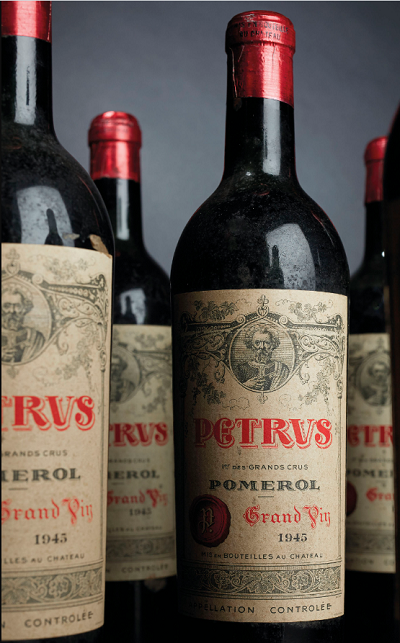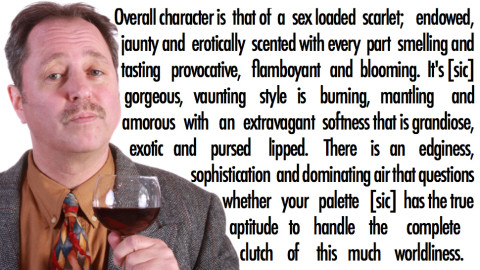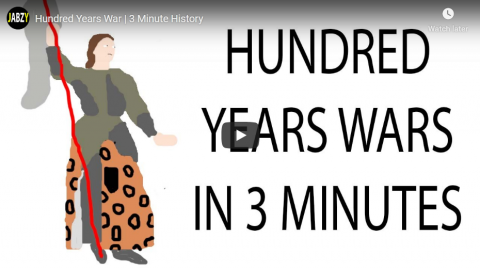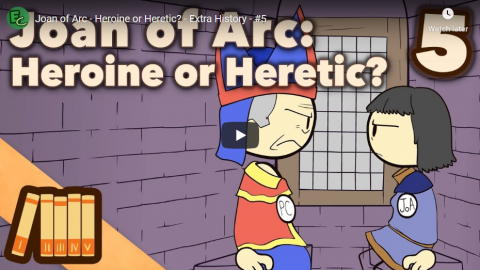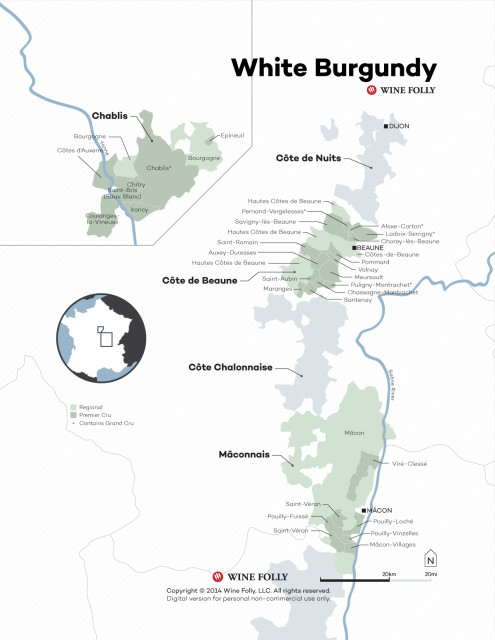Here’s a tip when dining out and the sommelier asks you to “taste” the wine: don’t do it. Pick up the sample glass, swirl it a couple of times and then sniff it cautiously. If it’s not rancid — and you’ll know that when you smell it — just nod and say, “That’ll do”. If he says, “Don’t you want to taste it?” reply “I don’t need to”. Then sit back and carry on with your conversation, ignoring him.
For extra points: if it’s a dark red like a cabernet or burgundy, wince slightly, then tell the sommelier to let it breathe for ten or so minutes before he serves it to the table. (That’s a cheat, by the way; all reds need to breathe a little after uncorking.)
The wine world is full of phonies who like to show off. The way to make people think you know what you’re talking about is to say less, not more. What you do (see above) is more impressive than what you say.
Kim du Toit, “Busted”, Splendid Isolation, 2019-11-25.
April 2, 2025
QotD: Restaurant wine etiquette
January 16, 2024
Why Real Dijon Mustard Is So Expensive | So Expensive Food | Business Insider
Insider Business
Published 12 Jul 2022Dijon mustard has a tangier, sharper, and spicier flavor compared to other types of mustard. It takes its name from the town of Dijon in Burgundy, France, where it originated. But despite its name, the majority of Dijon mustard that is sold all over the world doesn’t come from France. The few jars that do will cost you up to six times more than regular Dijon mustard (or double if we want to compare it to Grey Poupon). So how is real Dijon mustard different? And why is it so expensive?
Editor’s Note: In this video, the translations at 2:10 and 3:16 are incorrect. The rind of the mustard seed is wrongly referred to as “sound of mustard”. The correct translation is mustard bran. Insider regrets the error.
(more…)
August 13, 2022
The lure of old wines
In The Critic, Henry Jeffreys admits his continuing love for mature wines, even past the point most people would consider them drinkable:
For some people wine appreciation is like big game hunting. It’s about ticking off the prizes: Latour, Petrus, Romanee Conti. Whereas for others it’s about chasing unicorns, looking for mythical wines so rare that they are almost impossible to obtain. I don’t have the money for either, but even if I did, I still think I would take the greatest pleasure in opening a strange old bottle and being surprised by how delicious it is.
I’m fortunate in having friends and relatives who think wine is more for keeping than for drinking. When my grandfather died, we inherited all kinds of strange things that he’d been saving including a half bottle of 1937 Army & Navy claret.
I’ve certainly never had the deep pockets to go after any of those tip-top wines, although I used to be able to go to LCBO wine tasting events where there’d occasionally be opportunities to try a few ultra-expensive wines (Petrus, Château Margaux, Nuits-Saint-Georges, Chassagne-Montrachet, Puligny-Montrachet, etc.). If I’m totally honest, in a few of those cases, the bouquet of the wine promised far more than the taste could deliver … I appreciate and enjoy better quality wines, but I don’t taste enough difference between a $50 bottle and a $500 bottle to justify paying the premium.
Oddly certain people get quite upset at lovers of very old wine. On Twitter recently a sommelier wrote “your taste sucks” to someone who expressed an enjoyment of such wines.
The French look at this peculiarly British habit as close to necrophilia. Americans, too, drink vintage port after a couple of years rather than waiting a generation as is customary.
There’s something magical about what decades can do to a wine. Quite austere clarets become heady and exotically-spiced while sweet wines begin to taste dry. I also relish the flavours that some might find less appealing: the tang of vinegar, the cooked taste of caramel and the whiff of sherry in wines that definitely are not sherry.
Maybe my taste sucks too but sometimes I prefer a wine to be old than to be particularly good. You adjust your palate, it’s like having a conversation with an elderly relative who’s a bit deaf but with great stories to tell.
March 16, 2021
“… because who doesn’t like to see both wine snobs and the French taken down a peg or two?”
In The Critic, Henry Jeffreys sadly notes the passing of Steven Spurrier, perhaps best known for organizing the “Judgement of Paris” in 1976:
The wine world lost one of its giants this week in Steven Spurrier. He’s one of the very few people who managed to put the subject on the front pages of the world’s newspapers when he organised the so-called Judgement of Paris competition in 1976.
This was a blind tasting judged by the great and good of the French wine world pitting the might of Bordeaux and Burgundy, against California, a place whose wines most Europeans had never even tasted. Surely France could not lose. But thrillingly, and deliciously, it did, with Californian wines coming top in both the white and red categories. It inspired a book and a feature film Bottle Shock starring Alan Rickman as Spurrier. In fact, the media, particularly over here and in the US, has never lost interest. Perhaps because who doesn’t like to see both wine snobs and the French taken down a peg or two?
More significantly, it marked the arrival of American and later Australian, Chilean and other New World wines. Fittingly, I first met Spurrier at a round table tasting for an upmarket Chilean wine. These tastings could be nerve-wracking affairs for new writers. They still fill me with anxiety. I never know what to say as the big beasts of the wine world opine. Sometimes, the cellar rooms where such tastings are often held seem much too small for all those jostling egos.
I was sat next to Spurrier and, much to my surprise, he asked me my opinion on the wines, something I don’t think any other writer had done up to that point. He then engaged with what I said, and said something like, “yes, I think you’ve got it there.” Or words to that effect. It’s quite hard to express how startling this experience was to someone outside the wine world. It’s like Martin Scorsese asking your opinion on film making.
June 23, 2020
The “Battle of Dijon”
I post a lot of accounts of ancient and modern wars and battles, but the “Battle of Dijon” actually took place earlier this month and has been widely mischaracterized in the media, as John Lichfield recounts:

Dijon viewed from Saint-Bénigne Cathedral with the Palace of the States of Burgundy, the Notre-Dame and Saint-Michel churches, the Saint-Nicolas tower, the former Saint-Bénigne abbey palace (ENSA), The Lafayette galleries, the old department stores at Le Pauvre Diable and la Ménagère.
Photo by Twibo2 via Wikimedia Commons (caption translated by Google Translate).
Dijon, the capital of Burgundy, rarely attracts the world’s attention. There is Dijon mustard of course. There is Dijon blackcurrant liqueur (Cassis de Dijon). There are many beautiful, old Burgundian streets and buildings. But of all the medium to large cities in France, Dijon (population: 159,000) is surely the least talked about.
Then, abruptly, last weekend Dijon had the great misfortune to become newsworthy. War broke out, we were told, between “Chechen gangs” and “Arab gangs”. The dispute was, some French media reported, about the right to traffic drugs. The Daily Mail announced that the French army had been sent in to restore order. Marine Le Pen compared Dijon to Beirut. Similar “wars between migrant communities” now threatened, she said, all over France.
All these reports were, I believe, wrong or deeply misleading. What did happen in Dijon over four days the other weekend was surreal and disturbing. But the incidents defy simple explanation or political point-scoring. They say, perhaps, more about Chechnya, and the values — good and bad — of exiled Chechens, than they do about the wider racial issues of France. The severity of the violence probably owed something to the frustrations of France’s recent nine weeks of Covid lockdown. The political and media reaction was skewed by the fact that the events occurred while France was in the midst of a debate about race and policing – in the wake of the George Floyd killing in the United States.
On Sunday evening, on the third night of violence in Dijon, President Emmanuel Macron happened to be addressing the nation on TV. He said, among many other things, that he would resist all pressure to splinter France into ethnic communities.
So what had happened over four days in Dijon? There are several conflicting accounts. Here, briefly, are the facts that I have been able to establish.
On 9th June a 15-year-old (some say 16-year-old) boy of Chechen origin was badly beaten up outside a chicha (hookah) bar in central Dijon. His attackers were local men in their 30s of African and North African origin. According to the Chechen version of events, the men were drug-dealers. The injured boy apparently had no connection with drugs. The dealers attacked him because local Chechens were known to be hostile to drug-trafficking. They put a gun in the boy’s mouth and said: “We hate Chechens. We’re going to let you live so you can tell the other Chechens what’s going to happen to them.”
Three days later a convoy of cars arrived in Dijon packed with Chechen men from several other parts of France, as well as Belgium and Germany. Local media and police say that there were 100 of them; the Chechens say that there were only 15. They smashed up the chicha bar, assaulted its owner and then rampaged through the multi-racial Les Grésilles area of council estates just north-east of central Dijon.
June 5, 2020
Hundred Years War | 3 Minute History
Jabzy
Published 18 Oct 2015Thanks to Xios, Alan Haskayne, Lachlan Lindenmayer, William Crabb, Derpvic, Seth Reeves and all my other Patrons. If you want to help out – https://www.patreon.com/Jabzy?ty=h
Apologies, especially to the Patreon supporters for not uploading recently, I’ve changed jobs/moved house etc. I should be back on the usual schedule now.
Plus, thanks for the 12,000 subs.
February 26, 2020
QotD: Chardonnay
What seemed to me to make white Burgundies worth the effort was the fact that they tended to have more character, to be better balanced, more elegant … more, how you say in English … more Catherine Deneuve. More Jules and Jim than Die Hard; less top-heavy and more food-friendly than New World wines. On the other hand, it was and is quite possible to spend forty bucks on a bottle that tastes like it has been barrel-fermented with a big clump of terroir, or with Pierre’s old socks, or possibly his former cat. Yikes! Rather too much character, mon cher.
Jay McInerney, Bacchus & Me: Adventures in the Wine Cellar, 2002.
August 19, 2019
Joan of Arc – Lies – Extra History
Extra Credits
Published on 17 Aug 2019Writer Rob Rath talks about all the cool stories and facts we didn’t get to cover in our recent series on the hated and beloved Joan of Arc.
Join us on Patreon! http://bit.ly/EHPatreon
From the comments:
Extra Credits
2 days agoRecommended reading:
– Joan of Arc: A History, by Helen Castor
– Joan of Arc by Herself and Her Witnesses, by Régine Pernoud
– Orléans, 1429: France Turns the Tide, by David Nicolle
4:01 – really cool side characters that didn’t make the final video script (but did show up in Game of Thrones??)
8:12 – multiple versions of Joan’s meeting with Charles
10:48 – all the other famous people we didn’t mention, including Gilles de Rais
13:11 – Joan really did have excellent tactical acumen, which we had to gloss over in her later battles
19:55 – what’s next on Extra History
21:17 – Six Degrees of Walpole
August 5, 2019
Joan of Arc – Heroine or Heretic? – Extra History – #5
Extra Credits
Published on 3 Aug 2019Join us on Patreon! http://bit.ly/EHPatreon
Joan had been sold out to the English. Bishop Pierre Cauchon was determined to prove the inaccuracy of her visions and her motivations so that Charles could have no claim to the throne. But Joan held on till the bitter end.
July 28, 2019
Joan of Arc – Thy Kingdom Come – Extra History – #4
Extra Credits
Published on 27 Jul 2019Join us on Patreon! http://bit.ly/EHPatreon
City after city surrendered to Joan of Arc without a fight. Her mission was complete… or was it?
July 14, 2019
Joan of Arc – Angels and Demons – Extra History – #2
Extra Credits
Published on 13 Jul 2019Joan of Arc was on a mission from God — a mission to guide the Armagnacs into a holy war.
Follow us on Instagram: http://bit.ly/ECisonInstagramJoin us on Patreon! http://bit.ly/EHPatreon
December 14, 2018
QotD: Burgundy
If it’s red, French, costs too much, and tastes like the water that’s left in the vase after the flowers have died and rotted, it’s probably Burgundy.
Jay McInerney, Bacchus & Me: Adventures in the Wine Cellar, 2002.
March 19, 2015
Getting to know the “the cocaine of Chardonnay”
At Wine Folly, Morgan Harris talks about the original home of Chardonnay:
For winemakers, white Burgundy may just be the Helen of Troy of Chardonnay because nearly everyone who’s ever made Chardonnay has looked towards white Burgundy as the golden standard. All in all, white Burgundy is just Chardonnay, but the region is also the origin place of the variety, which is by the way, the world’s most planted white grape. In Burgundy, the combination of climate, land and tradition produce a wine that is coveted by many and never precisely replicated anywhere else.
Once you’re hooked on white Burgundy, there’s no going back. White Burgundy is the crack cocaine of Chardonnay. Sommeliers and retailers who sell white Burgundy sound like drug dealers: “Just try some, you’ll love it…”
Now that you’ve had a proper introduction, let’s get started exploring the region and the wine. While people have dedicated their lives to understanding the region, anyone can be learn how buy and appreciate white Burgundy.
Broadly, white Burgundy can be found in four production areas within Burgundy. Each area has a different terroirs and characteristics and thus, different flavor profiles:
- Bourgogne Blanc ($$$): unoaked simple wines with mineral and apple notes
- Chablis ($$$$): unoaked wines that are zippy and lean with lime-like mineral flavors
- Mâconnais ($$$): usually unoaked wines with melon and starfruit notes
- Côte de Beaune ($$$$$): typically oak-aged wines with rich fleshy melon and starfruit flavors and undertones of truffle and hazelnut
($) $5–10; ($$) $10–15; ($$$) $15–20; ($$$$) $20–30; ($$$$$) $30+;
NOTE: There are a few wines from outlier regions within Burgundy not included in this guide.
I’m a fan of oaked chardonnay … I don’t particularly like unoaked chardonnay, but add that hit of oak and it’s a wonderful experience. The best white Burgundy I’ve ever had was a Chassagne-Montrachet, but I rarely risk buying French wines these days due to the sometimes chancy relationship between the price at the LCBO and the actual quality of the wine.

